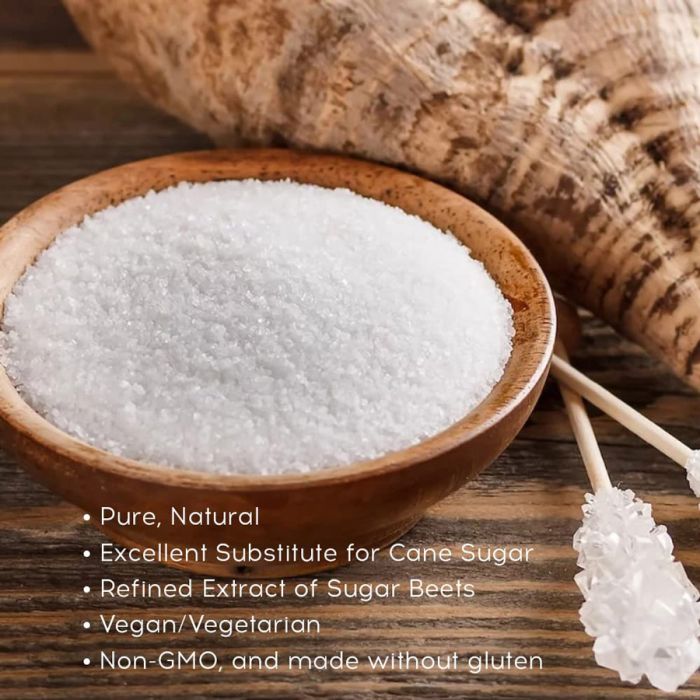Exploring the Distinctions being used and Advantages In Between Beet Sugar Vs Cane Sugar
In the cooking globe, the selection in between beet sugar and cane sugar is not simply concerning sweetness but involves a nuanced consideration of taste, application, and influence. While both sugars stem from different plants, each undertakes unique manufacturing processes that discreetly affect their features and viability for various meals.
Origins and Production Processes of Beet and Cane Sugar

Walking cane sugar, on the other hand, comes from the sugarcane plant, an exotic lawn indigenous to Southeast Asia now cultivated in tropical areas worldwide. The manufacturing of cane sugar starts with the harvesting of cane stalks, which are crushed to launch the juice. This juice is after that steamed to concentrate it, after which it is spun in centrifuges to create raw sugar crystals. These crystals are more refined to create the white sugar generally available in stores.

Nutritional Content and Wellness Considerations

When contrasting the dietary content of beet sugar and cane sugar, it becomes noticeable that both types essentially offer the exact same caloric values, with around 16 calories per tsp and no substantial nutrient variety. Both sugars, when eaten in excess, can contribute to raised blood sugar degrees, a threat aspect for diabetic issues and various other metabolic conditions. From a health viewpoint, regulating consumption of any kind of kind of sugar, whether from beet or cane, is recommended to stay clear of these prospective adverse impacts on health.
Flavor Accounts and Culinary Applications
Regardless of their comparable chemical structures, beet sugar and cane sugar differ subtly in taste, which can affect their use in various cooking contexts. Walking cane sugar typically carries a hint of molasses, also in its refined form, providing a cozy, caramel-like touch that boosts baked goods, coffee, and chocolate-based recipes. On the other hand, beet sugar is defined by its very refined, neutral taste, making it a flexible sugar that does not modify the flavor profiles of meals.
Ecological Influence and Sustainability
While both beet and cane sugars are obtained from plants, their environmental impacts differ significantly due to the distinctive methods of farming and handling needed for each. Sugar beet cultivation typically entails comprehensive mechanization, which can increase fossil fuel usage and carbon emissions.
In addition, the handling of sugarcane typically produces a significant quantity of Read Full Article waste, consisting of bagasse, which, although useful as biofuel, often adds to air contamination if burned inefficiently. Sugar beet handling utilizes even more of the raw materials, causing less waste. Both industries encounter difficulties in reducing their ecological impacts, however ongoing advancements in agricultural methods and waste management are intending to enhance sustainability.
Economic Aspects Influencing the Sugar Market
The financial dynamics of the sugar market are substantially affected by worldwide market needs and profession policies. In regions where sugarcane or sugar beet manufacturing is subsidized, manufacturers might have a financial benefit that allows them to offer lower prices on the international market.
Furthermore, variations in worldwide demand for sugar, affected by dietary patterns and commercial usage in food, directly impact rates and manufacturing my blog levels. beet sugar vs cane sugar. Climate condition likewise play an essential role, as they can significantly influence plant returns and, as a result, the supply chain. This variability presents a level of financial uncertainty that can result in investment volatility in sugar manufacturing sectors, influencing choices from planting to market technique
Conclusion
To conclude, both beet and cane sugar have one-of-a-kind top qualities that fit different cooking requirements. While cane sugar imparts an abundant flavor suitable for improving baked goods, beet sugar's nonpartisanship is ideal for lighter recipes. Nutritional resemblances notwithstanding, their distinctive production procedures and environmental impacts read this post here include complexity to the selection in between them. Therefore, understanding these distinctions helps cooks and consumers make educated decisions that straighten with their health and wellness, culinary, and honest preferences.